Setup¶
UniversalPython can be used either online or locally on your computer. Choose the option that best fits your needs.
Online¶
You don’t need to install UniversalPython to try it out! Simply visit our online playground, where you can write and run UniversalPython code directly in your browser — no installation required.
Playground URL: https://universalpython.github.io/playground
Benefits¶
No setup or configuration needed.
Instantly try different human languages supported by UniversalPython.
Great for testing syntax or quick demos.
Limitations¶
The online playground is designed for experimentation and has a few limitations:
Limited execution time and memory.
Restricted access to system commands and file operations.
No ability to install additional Python packages.
Temporary workspace (your code isn’t saved permanently).
For full functionality, install UniversalPython locally on your computer.
On Your Computer¶
If you want to use UniversalPython for real projects or contribute to language packs, install it locally.
Follow these steps carefully — this guide assumes no prior Python experience.
1. Install Visual Studio Code (Code Editor)¶
Navigate to Visual Studio Code download page https://code.visualstudio.com/Download
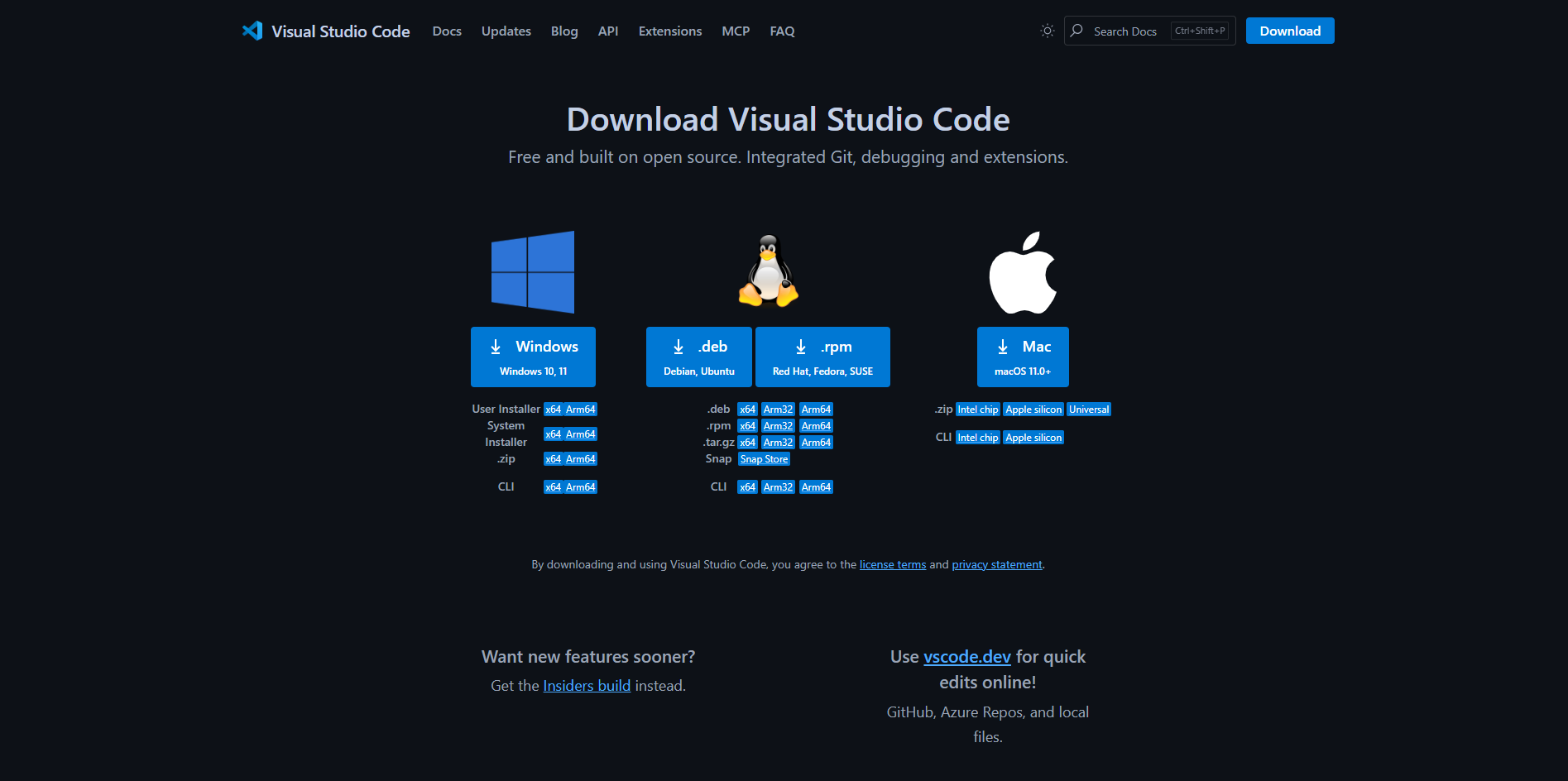
Download the installer that matches your operating system (Windows, macOS, or Linux)
Once the installer is downloaded, open it to start the installation process
After installation, open Visual Studio Code
2. Install Python 3.14 or newer¶
Download and install Python from the official website:
Download Page: https://www.python.org/downloads/
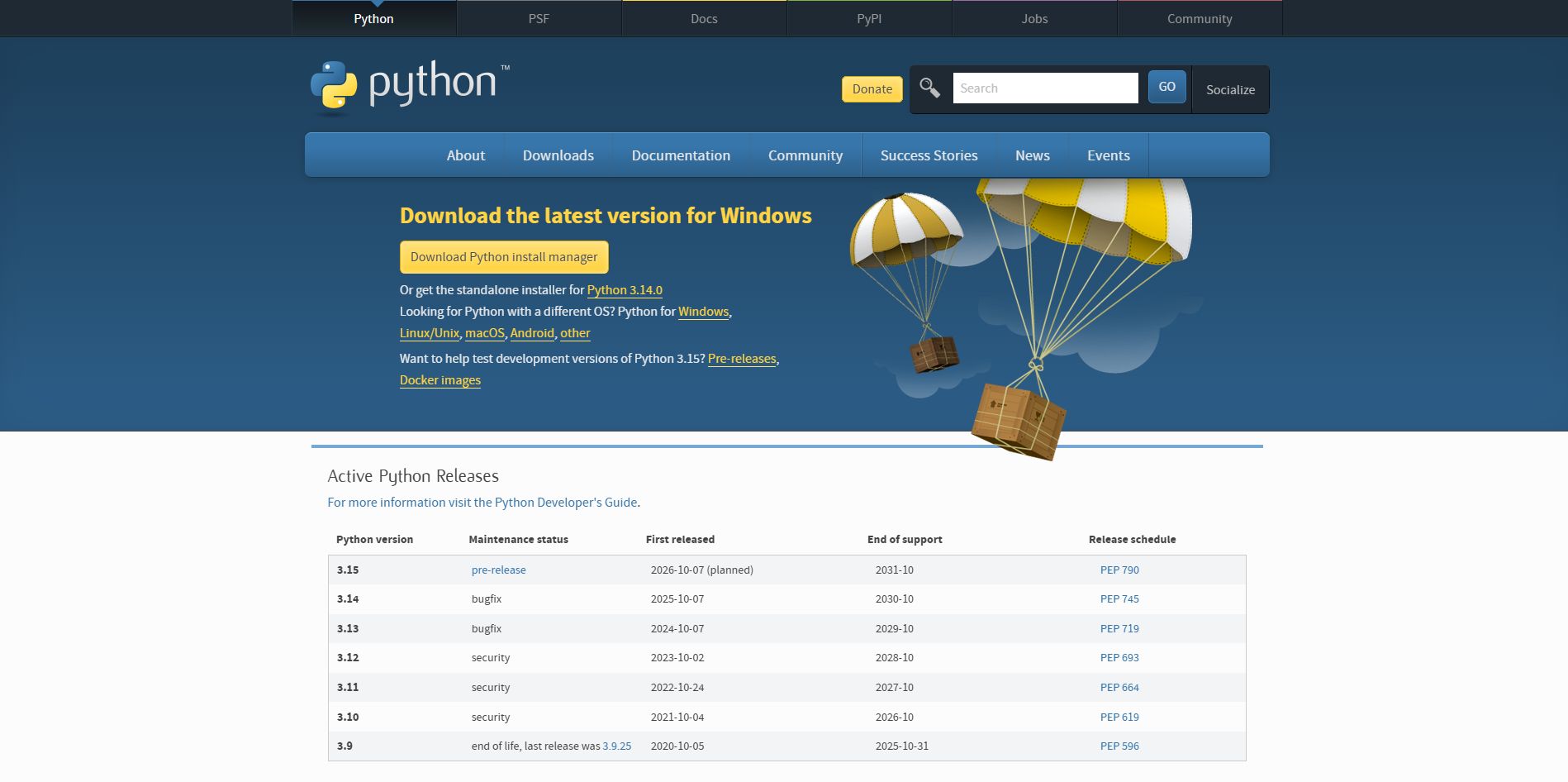
During installation:
Check the box that says “Add Python to PATH”.
On Windows, use PowerShell or Command Prompt to run commands.
On macOS or Linux, use Terminal.
Once installed, verify Python is available by running:
python --version
You should see something like:
Python 3.14.0
3. Verify pip is installed¶
pip is Python’s package manager. It should be included with modern Python installations.
Check that it’s working by running:
pip --version
If you see a version number (e.g., pip 25.0), you’re good to go. If not, refer to the Python documentation on installing pip:
3. Install UniversalPython¶
Once Python and pip are ready, install UniversalPython by running:
pip install universalpython
This will automatically download and install the latest version.
4. Verify installation¶
After installation completes, test that UniversalPython is working:
universalpython --help
If you see the UniversalPython help menu, you’re ready to start coding!
Using UniversalPython in Visual Studio Code¶
Create a new folder
Open the folder in Visual Studio Code
Open Visual Studio Code
From menu bar go to File and select Open Folder…
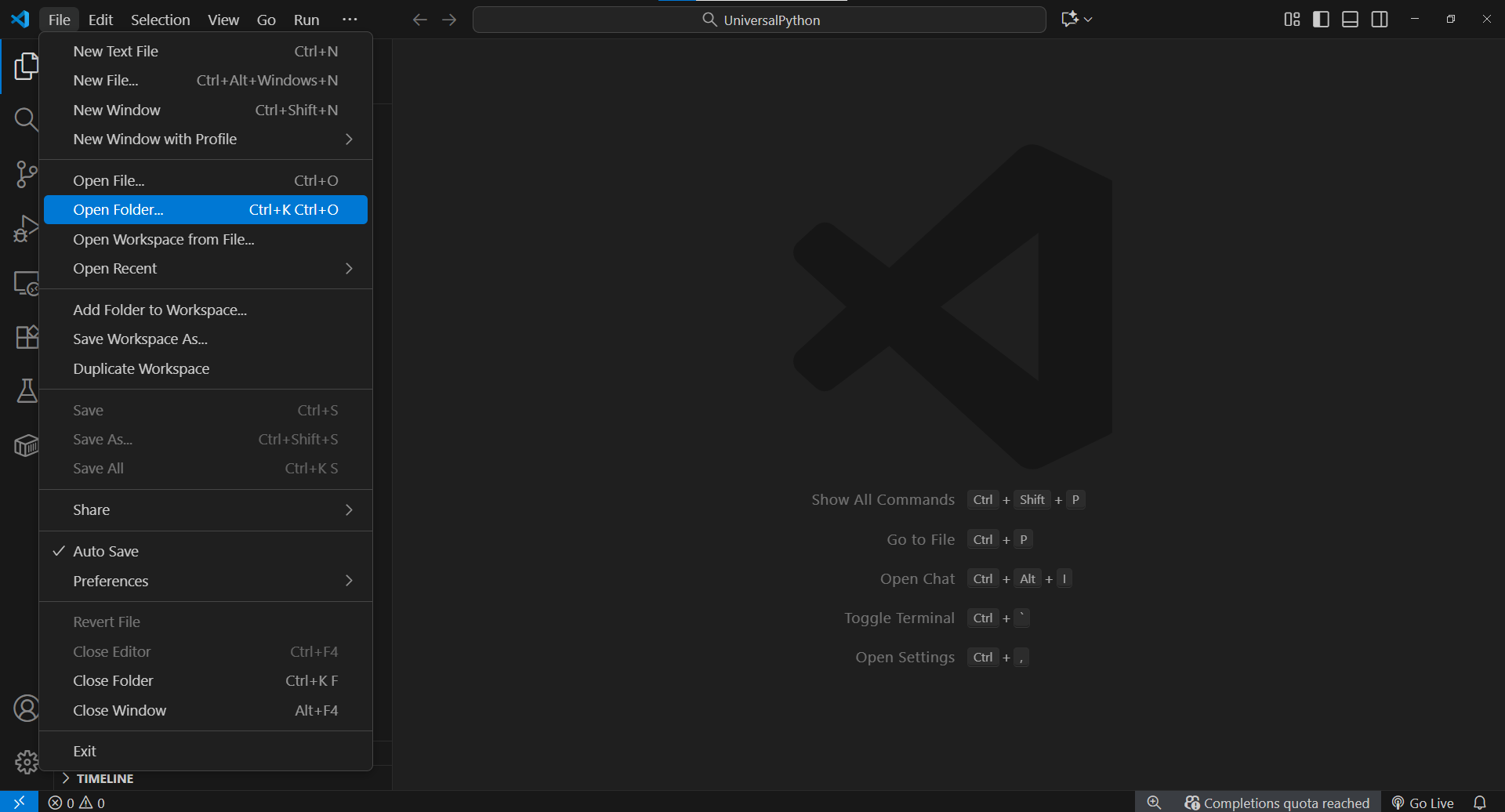
Select the folder you created
Create a new file with this format: <file_name>.<language_code>.py
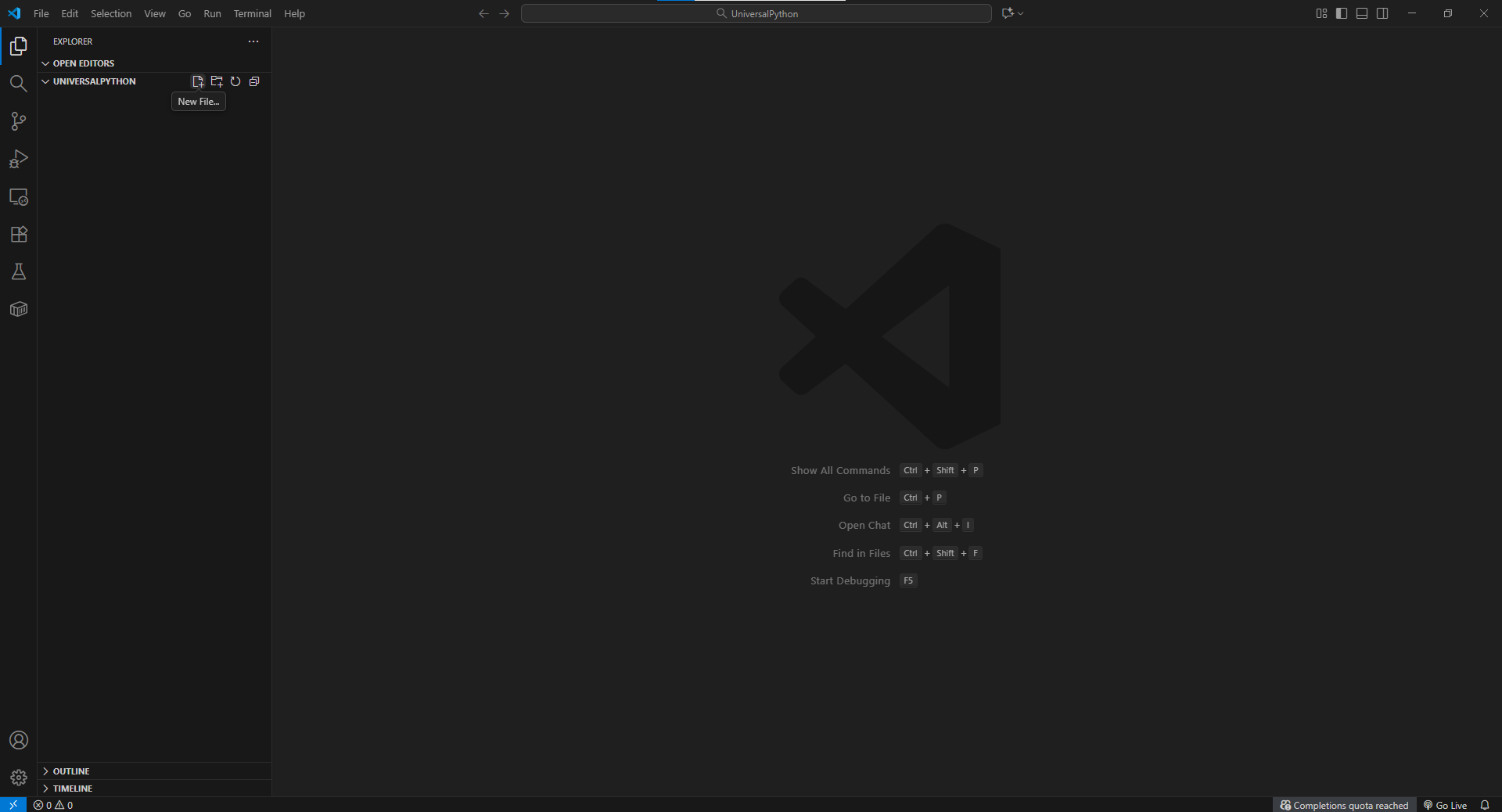
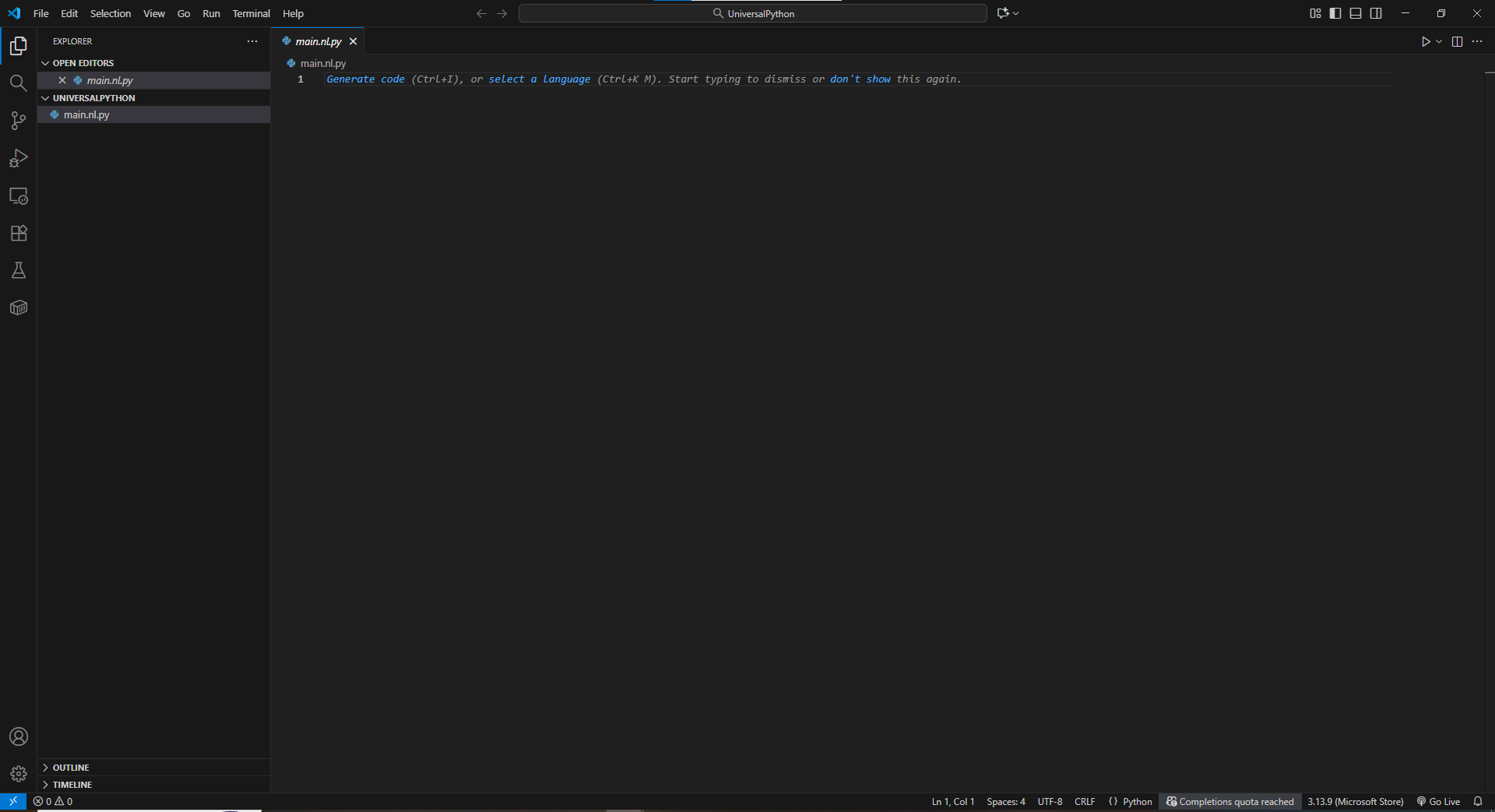
Write some code
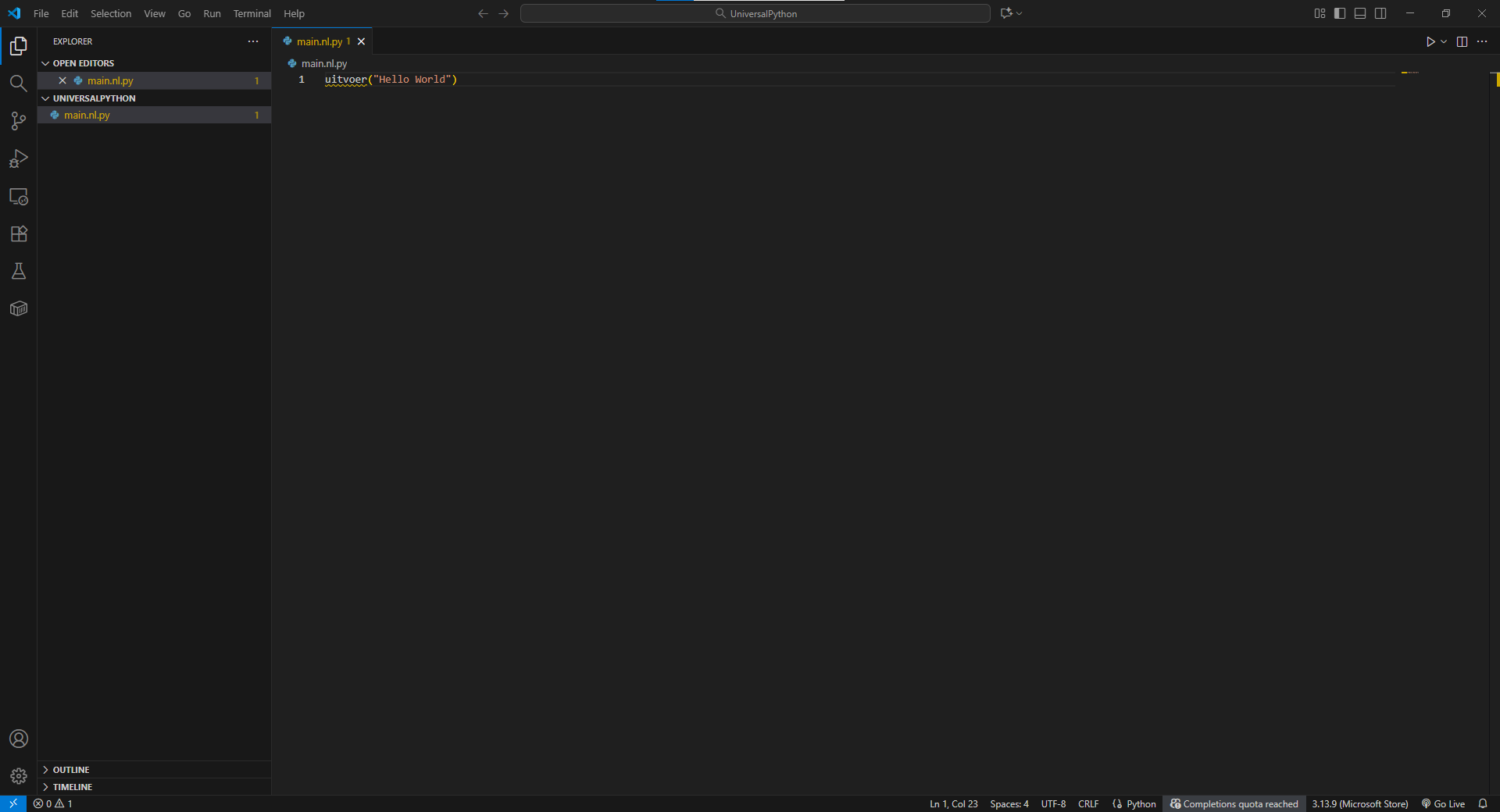
To execute the code, open the terminal and run this command: python <file_name>.<language_code>.py



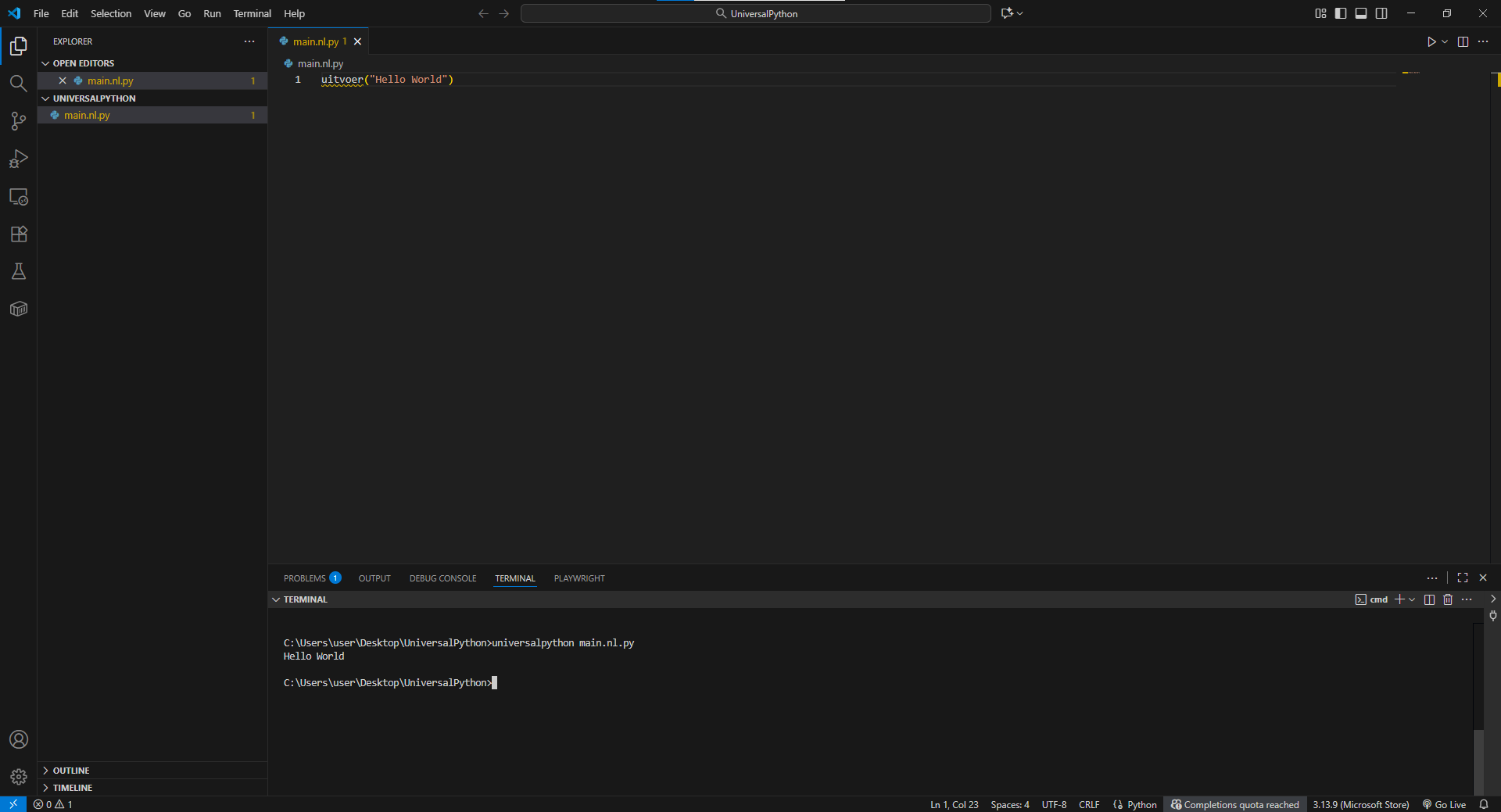
Using UniversalPython in Jupyter Notebook¶
UniversalPython can also be used inside Jupyter Notebook for an interactive, notebook-based experience.
We provide an official Jupyter kernel that enables you to write and execute UniversalPython code directly in a notebook.
Repository: https://github.com/UniversalPython/universalpython_kernel
Installation Steps¶
Install Jupyter if you haven’t already:
pip install jupyterlab
Install the UniversalPython Jupyter kernel:
pip install universalpython_kernel
Register the kernel with Jupyter:
python -m universalpython_kernel.install
Launch JupyterLab:
jupyter lab
Once open, you’ll be able to select UniversalPython as a kernel when creating a new notebook.